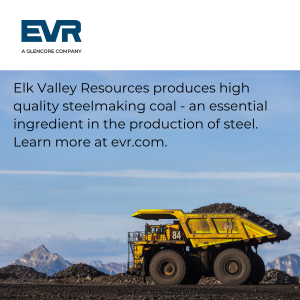
The Rocky Mountains are one of the most iconic and biologically significant mountain ranges in the world. Stretching almost 5,000 kilometres from northern British Columbia to the arid reaches of the US Southwest, these spectacular mountains support a vast array of species and provide an essential corridor to maintain genetic diversity for grizzly bears throughout the continent. Near the geographic centre of the Rockies is the region often referred to as the Crown of the Continent, an ecosystem that straddles international and provincial borders. So significant is this region that part of it has been declared a Unesco Biosphere Reserve.
In this heart of the Rockies a story of two divergent approaches to resource extraction is taking place. The players are the provinces of British Columbia and Alberta and this story has a twist. The people of Alberta are saying enough is enough while British Columbia is full speed ahead.
The geological forces that created the peaks and valleys of the Rocky Mountains were at work beneath the mountains as well. Hidden from sight from northern British Columbia and Alberta down through the US states are some of the most highly prized metallurgical coal deposits in the world. Coal has been mined at an industrial scale in the Crown of the Continent since the late 19th century. First underground and now, for the past 50 years, through massive mountain-top removal mines.
In the Elk Valley, a picturesque valley that cuts through Canada’s Southern Rockies, there are five large open pit coal mines, covering more than 100 square kilometres. Two of these have their ultimate origins as underground mines back in the early 20th century. Coal mining built the communities of the Elk Valley.
Across a wide tract of the heart of the Canadian Rockies, there are active applications for eight more mountain-top removal coal mines, four each in the mountains of BC and Alberta. Even as international steel companies move away from metallurgical coal because of the carbon pollution released when it is burned to make steel, there is a frenzy of activity in Canada to lock in plans to mine huge swaths of our mountain landscape.

Environmental destruction
These mines don’t just reduce mountain-tops to rubble, they dump the leftover mountains into the adjacent valleys, turning mountains, valleys and peaks into moonscapes. Critical habitat and corridors for grizzly bears and wolverines, bighorn sheep and elk, are destroyed. These species are pushed to the margins by mining and other development activities. Mountain valleys, key to wildlife connectivity, become industrial landscapes, filled with the rubble and machinery of mining, pinching off already diminished connectivity points.
The waterways of the region are under assault as well. Westslope cutthroat trout have been completely wiped out in some smaller creeks downstream of the mines and have recently lost 93% of their population of adult fish in the upper Fording River.. Selenium pollution is building up in fish eggs, ovaries and tissues as well as in drinking water sources for local residents. There’s so much water pollution coming from the Elk Valley coal mines that fish are in danger hundreds of kilometres downstream. And there’s no end in sight: selenium pollution will keep flowing from Elk Valley mines for centuries or even millenia. More mines will add more pollution.
To double or triple the number of coal mines in what is one of the most important wildlife corridors on the planet is a fool’s errand from a sunset industry. Yes, we need steel, yet to combat climate change, the world is actively pursuing methods that remove coal almost entirely from the equation. The motivation of corporations is to extract profits from this fading resource; it is the people of the province and country who are left with the scars upon the landscape. Government must take the lead and recognize the folly of voracious pursuit at the expense of water, wildlife and the planet.

Public reaction
As proposals and exploration for new mines in the Rockies move forward, the public reaction in BC and Alberta could not be more different. Albertans are galvanized in response to the threat to this irreplaceable landscape and the possibility of contaminating their waterways. Municipalities such as Calgary, Canmore, Turner Valley and more are passing resolutions in opposition to this destruction and public figures are speaking out passionately against the prospect of permanent damage to mountains and waterways. In British Columbia, however, there is mostly silence. The proposed mines in BC are winding their way through the permitting processes with little notice from the people of the province.
On February 8th, it seemed as though the resource-hungry Alberta government listened to Albertans. Rather than plough forward with their folly, they appear to have reinstated the Coal Policy that protected the Rocky Mountains and foothills, which they rescinded less than a year ago, giving some hope that Alberta may reverse course on coal mines. In British Columbia, however, environmental assessments are going ahead to double the number of mines in the Elk Valley, locking in half a century more of mining.
Why is British Columbia forging ahead even as Alberta puts on the brakes? Proximity may be the determining factor. While Alberta’s Rockies are two hours away from the province’s largest cities, the Elk Valley is 12 hours and a world away from the British Columbia coast where decisions are made. As is so often the case, out of sight, out of mind.
It is no small irony that the government of Alberta, the greatest champion of resource extraction in the country, is putting the brakes on mountain-top removal coal mining while British Columbia, often perceived as the “greenest” province, is doubling down on this sunset industry. Unfortunately, as a result, we may lose one of the most ecologically important places on the planet.
By: Randal Macnair
Photo: Garth Lenz / ILCP

























